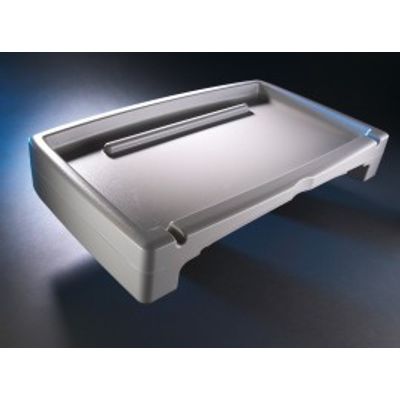

- Home
- Companies
- Providien LLC
- Products
- Providien - Pressure Forming for ...

Providien - Pressure Forming for Plastics
Pressure forming uses high vacuum pressure and special tools to form plastic into molds. It produces a finely detailed product. Normal vacuum pressure is limited to an atmospheric pressure of about 14.7 psi. Pressure forming allows us to utilize more vacuum pressure. This creates a stronger product with precise dimensions and appearance. If you need a perfectly executed product, pressure forming is the way to go.
The now heated sheet is placed into a pressure box along with the mold of the desired product. With the sheet secured, a strong vacuum applies up to 85 PSI pressure to the mold side of the sheet. The suction pulls and forms the sheet over the mold.
The vacuum pressure forces the part to match the contours of the mold. At the same time, air pressure is applied to the top of the sheet. Pressure forming gives 3 to 4 times the amount of pressure used in traditional vacuum forming. The combination of both pressures is what gives the product such finesse.
Following forming, the part cools on the mold. The part is then freed of molded stress and ready for finishing. Even before the product is finished, it looks identical to the mold.
Sometimes the plastic sheet can be stretched too thin. This can create problems in the pressure forming process. If the plastic is too thin, it can crack. Too thin a sheet will also be too weak for certain projects.
To reduce the amount of material thinning in parts with a deep draw, plug assists are often used. This pre-stretches the plastic sheet and reduces the amount of material thinning that can occur.
A plug assist is called for when using a negative mold with pre-stretching. The mold is pushed into the heated plastic sheet to create a seal on the edge. At the same time, the plastic sheet pushes into the mold using the plug assist. This is opposite of what usually occurs with pressure forming.
As it enters the hot sheet, air between the sheet and the mold is compressed, causing the sheet to undulate around the plug. The hot plastic sheeting is prevented from directly contacting the cooler mold as the sheet stretches. This ensures maintaining a consistent material dimension.
Providien uses a thinner starting gauge plastic, which reduces both raw material and processing cost.
Plastic pressure forming starts with an extruded sheet of plastic secured in a clamp frame. Next, the plastic moves into an oven and heated until it reaches a malleable temperature.
Afterward, we remove the clamped sheet from the oven. It is then sandwiched between a pressure box and the chosen mold. The heated plastic forms a seal around the mold.
- Medical equipment
- Office equipment
- Transportation equipment
- Retail displays
- Outdoor equipment
- Embossed logos
- Control pads and panels
- Vented equipment enclosures
